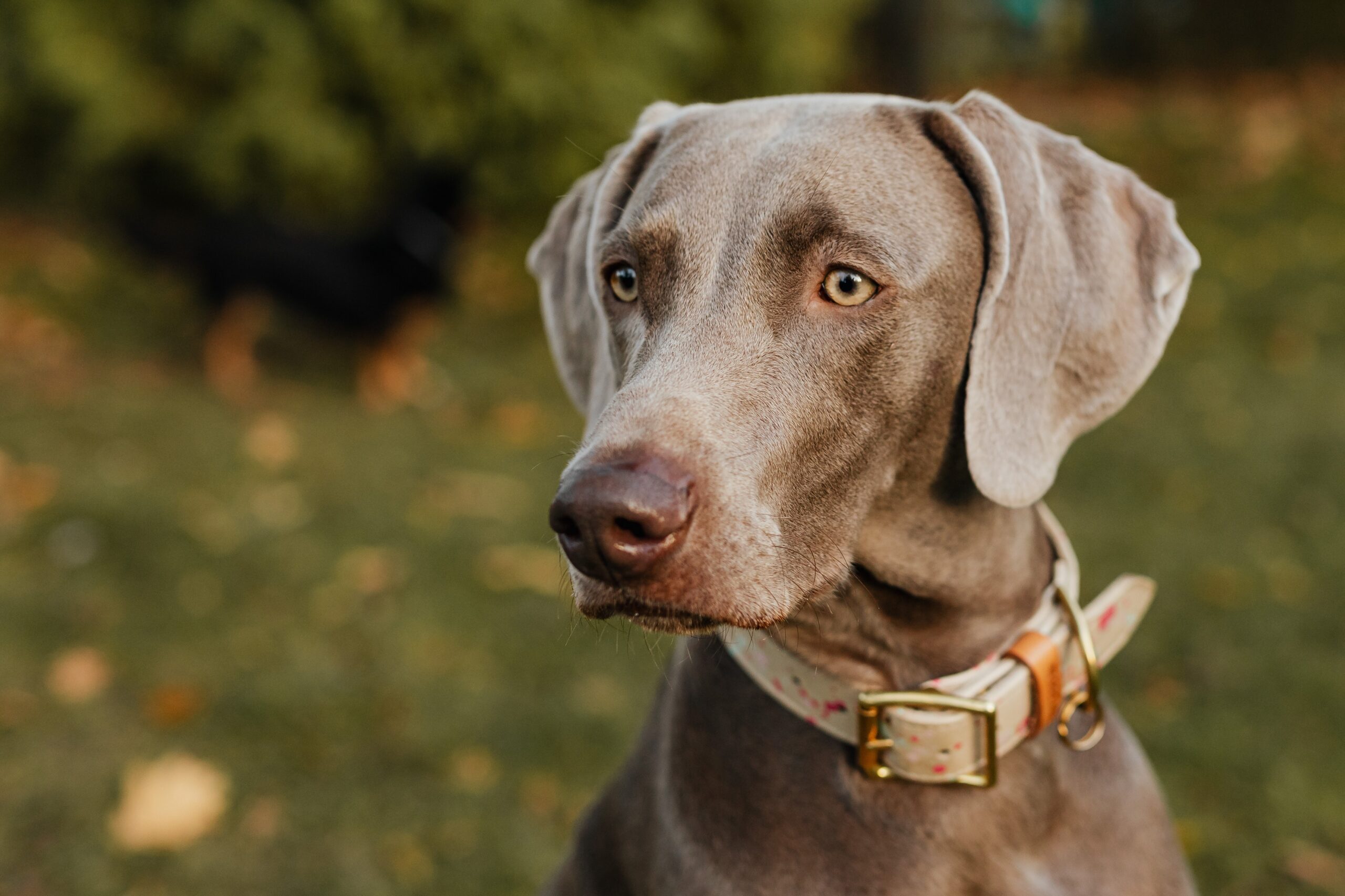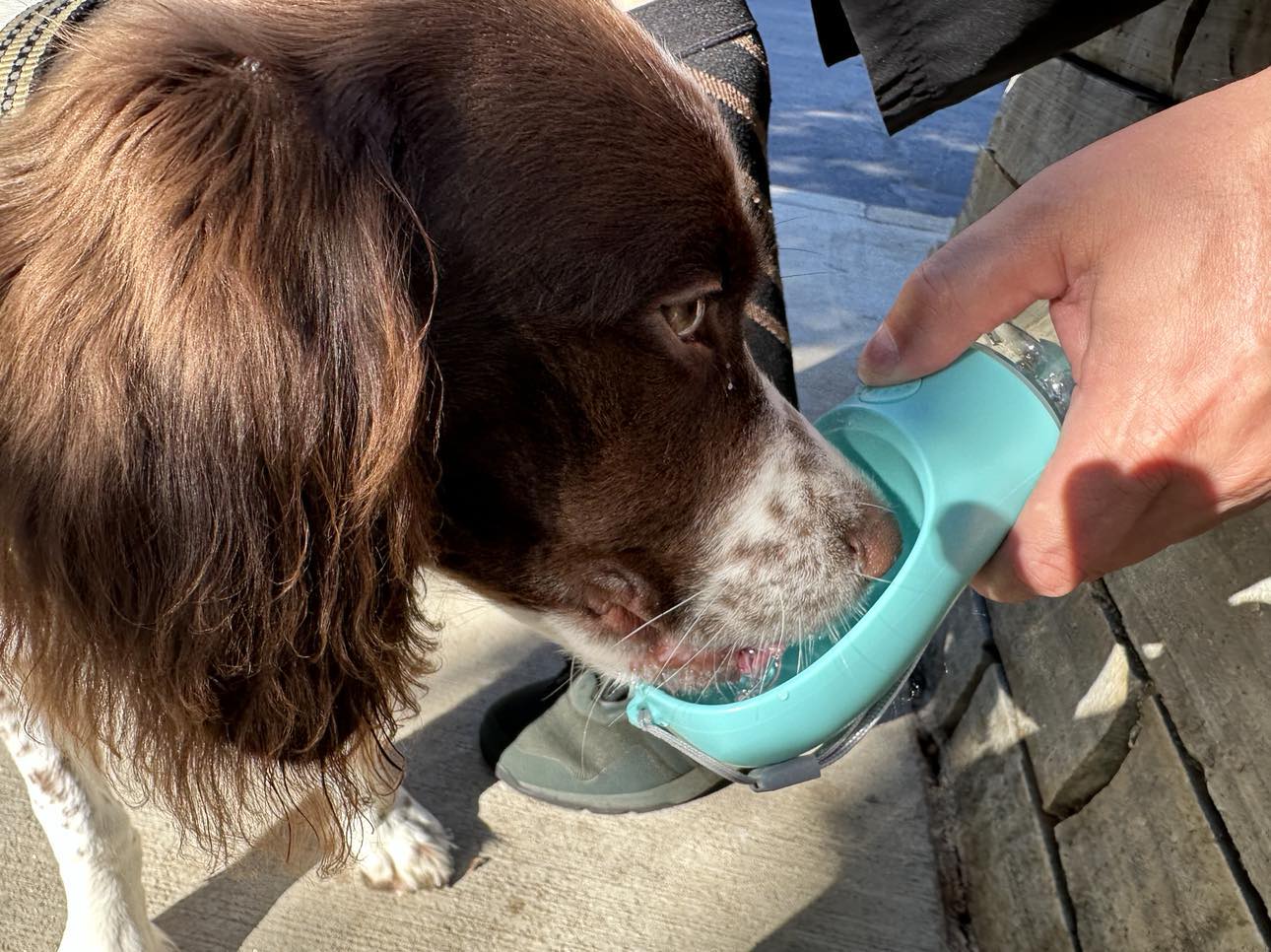Dog collars serve a crucial role in the daily lives of our furry companions. They are not just fashionable accessories but essential tools that provide a means of identification and control. Collars are typically used to attach identification tags, which include important information such as the dog’s name, owner’s contact details, and proof of vaccination. In the event that a dog goes missing, a collar with identification tags greatly increases the chances of a safe and swift reunion with their owner. Additionally, collars are instrumental in controlling dogs during walks, preventing them from wandering off or getting into potentially dangerous situations. They also serve as a point of attachment for leashes, allowing pet owners to maintain a firm grip and guide their dogs while ensuring their safety in public areas.
Purpose of the Article
The purpose of this article is to provide a comprehensive exploration of various types of dog collars, shedding light on their unique features, benefits, and considerations. By examining different collar options, we aim to equip dog owners with the knowledge required to make informed decisions when selecting the most suitable collar for their furry companions. From traditional flat buckle collars to specialized harnesses, head halters, and training collars, we will delve into the specifics of each type, highlighting their advantages and disadvantages. Furthermore, we will address safety considerations and the emerging trend of calming collars, designed to soothe and alleviate anxiety in dogs. By the end of this article, readers will have a thorough understanding of the diverse range of dog collars available, enabling them to prioritize their dog’s comfort, safety, and overall well-being.
Traditional Collars
Flat Buckle Collars
Flat buckle collars are the most commonly recognized type of dog collar. They consist of a simple, adjustable strap with a buckle closure mechanism. These collars are typically made of durable materials such as nylon, leather, or fabric. Flat buckle collars are known for their simplicity and ease of use. They are available in a wide range of colors and designs, allowing dog owners to showcase their pet’s personality.
Advantages and Disadvantages
Flat buckle collars offer several advantages. They are easy to put on and remove, making them convenient for daily use. They provide a reliable attachment point for identification tags and leashes. Additionally, they are relatively affordable compared to other types of collars.
However, there are a few disadvantages to consider. Flat buckle collars may not be suitable for dogs prone to pulling or leash-reactivity, as they offer minimal control. They are also not recommended for dogs with delicate necks or certain respiratory conditions, as they can put pressure on the throat and trachea when pulled.
Suitable for Which Dogs
Flat buckle collars are suitable for most dogs, especially those who are well-behaved on walks and do not excessively pull on the leash. They are ideal for dogs who require a simple identification and control solution without any specific behavioral issues.
Rolled Collars
Rolled collars are a type of dog collar that features a rounded, tubular design rather than a flat band. They are typically made of soft, rolled leather or synthetic materials. Rolled collars are fastened with a buckle or a snap closure and often have a D-ring for leash attachment.
Advantages and Disadvantages
Rolled collars offer the following advantages:
- Reduced Matting and Hair Breakage: The rounded shape of rolled collars helps to distribute pressure more evenly and prevents matting or breakage of the dog’s fur, particularly for long-haired breeds.
- Comfortable Fit: The soft, rounded design of rolled collars makes them more comfortable for dogs to wear, reducing the risk of irritation or chafing around the neck.
- Stylish and Classic Look: Rolled collars are often considered fashionable and provide a timeless and elegant appearance.
However, there are a few potential disadvantages:
- Limited Control: Rolled collars may not provide as much control as some other collar types, particularly for dogs that are prone to pulling or have a strong prey drive.
- Not Suitable for Strong Pullers: If you have a dog that tends to pull on walks or has a tendency to escape, a rolled collar may not be the most secure option.
Suitable for Which Dogs
Rolled collars are suitable for a wide range of dogs, especially those with long or thick fur that can become easily matted or damaged by regular flat collars. They are ideal for dogs that do not require strong control during walks and have a calm demeanor. Rolled collars are also popular for dogs participating in dog shows or for those owners who prefer a more stylish collar option.
Martingale Collars
Martingale collars, also known as limited-slip collars or no-slip collars, are designed to provide more control than traditional flat collars without the choking effect of a choke chain. They consist of a wide flat collar section and an attached loop of material (usually nylon) that tightens when tension is applied to the leash.
Advantages and Disadvantages
Martingale collars offer the following advantages:
- Control and Safety: Martingale collars provide better control than traditional collars, especially for dogs that tend to back out of their collars or have slender necks. The tightening action of the collar prevents escape while avoiding excessive pressure on the dog’s neck.
- Training Aid: Martingale collars can be useful for training purposes, particularly for dogs that need gentle reminders to stay focused or maintain loose leash behavior.
- Reduced Risk of Choking: Unlike choke chains, martingale collars have a limited slip design that prevents them from continuously tightening, reducing the risk of choking or injury.
However, there are a few potential disadvantages:
- Limited Adjustability: Martingale collars may have limited adjustability, and it is important to ensure a proper fit to prevent discomfort or potential escape.
- Not Recommended for Unsupervised Use: Due to the tightening action of the collar, it is not recommended to leave a dog unattended or unsupervised while wearing a martingale collar to prevent any potential entanglement or choking hazards.
Suitable for Which Dogs
Martingale collars are particularly suitable for dogs with narrow heads, such as Greyhounds, Whippets, or other sighthound breeds, as well as dogs that tend to slip out of regular flat collars. They can be effective for dogs that require more control during walks or have a tendency to pull. Martingale collars are also a popular choice for adoption agencies and foster programs, as they provide a secure fit for dogs with unknown histories or behavioral issues.
Specialized Collars
Harnesses
Harnesses are an alternative to traditional collar designs, offering unique benefits in terms of comfort and control. Unlike collars that encircle the neck, harnesses distribute the pulling force across the dog’s chest and shoulders, reducing strain on the neck and potentially preventing injury.
Harnesses consist of straps that wrap around the dog’s chest and shoulders, often with an additional strap that fastens around the abdomen. They can be made of various materials, including nylon, leather, or padded fabrics. Some harnesses also feature additional attachments, such as front clips or handles, for increased control.
Advantages and Disadvantages
Harnesses offer several advantages over traditional collars. By distributing the force across the chest and shoulders, they are particularly useful for dogs prone to pulling, as they reduce the risk of neck injury. Harnesses also provide better control over larger or stronger dogs. Additionally, some harness designs can help discourage pulling behavior by redirecting the dog’s attention towards the owner.
However, harnesses may not be suitable for dogs who are already well-behaved on walks and do not pull excessively. They can also restrict the dog’s shoulder movement to some extent. It’s important to select a properly fitting harness to ensure optimal comfort and effectiveness.
Suitable for Which Dogs
Harnesses are suitable for various types of dogs, including those prone to pulling, small breeds with delicate necks, and brachycephalic breeds with respiratory issues. They are also beneficial for dogs recovering from injuries or undergoing rehabilitation, as they minimize strain on the neck and spine.
Head Halters
Head halters, also known as head collars or gentle leaders, are designed to control a dog’s head and muzzle, providing the handler with increased control and steering ability. They resemble muzzles but serve a different purpose.
Head halters consist of straps that wrap around the dog’s muzzle and neck, with a loop that attaches to the leash under the chin. The muzzle strap allows the handler to control the direction of the dog’s head, influencing their body movement. Most head halters are made of nylon or similar durable materials.
Advantages and Disadvantages
Head halters offer effective control over dogs, particularly those with a tendency to pull or lunge. They can redirect the dog’s attention and discourage unwanted behavior. Head halters also provide a means of control for dogs who may be reactive or aggressive towards other animals or humans. Additionally, they can assist in training exercises by allowing the handler to guide the dog’s movements.
However, head halters require proper introduction and acclimatization to ensure the dog’s comfort. Some dogs may initially resist wearing them, so gradual training and positive reinforcement are essential. It is also crucial to use head halters correctly, avoiding excessive pulling or jerking motions that can cause discomfort or injury to the dog.
Suitable for Which Dogs
Head halters are suitable for dogs that have a strong pulling instinct, are reactive, or require extra control during walks. They can be particularly beneficial for large or strong breeds that may overpower the handler with a collar or harness alone. It is important to note that head halters should not be used on brachycephalic breeds or dogs with certain respiratory conditions, as they can restrict breathing.
Prong Collars
Prong collars are specialized training collars that consist of a series of metal links with inward-facing prongs. The prongs are designed to provide a gentle pinch on the dog’s neck when tension is applied to the leash. Prong collars are typically made of stainless steel or chrome-plated steel.
Advantages and Disadvantages
Prong collars offer the following advantages:
- Training Tool: Prong collars can be effective training tools for dogs that have a strong tendency to pull on the leash. The pinch sensation serves as a deterrent and can help discourage pulling behavior.
- Control: When used correctly and under professional guidance, prong collars can provide handlers with better control over strong or reactive dogs during walks.
However, prong collars also have potential disadvantages:
- Potential for Injury: Improper use or excessive force can cause injury to a dog’s neck or throat. It is crucial to ensure that the prong collar is properly fitted and used with care to avoid harm.
- Negative Association: Some dogs may develop a negative association or fear towards the prong collar due to the discomfort it may cause. This can potentially worsen behavior problems or lead to increased anxiety.
Suitable for Which Dogs
Prong collars should only be used under the guidance of a professional trainer or behaviorist. They are generally recommended for larger and stronger breeds with a tendency to pull or display reactive behaviors. It is important to evaluate the specific needs and temperament of the dog and to explore alternative training methods before considering the use of a prong collar.
Calming Collars
Calming collars are specialized collars designed to help alleviate anxiety and promote relaxation in dogs. They are typically made of soft materials such as fabric or nylon and may include features like pheromone-infused patches or aromatherapy scents.
Advantages and Disadvantages
Calming collars offer the following advantages:
- Anxiety Relief: Calming collars can help reduce anxiety in dogs by providing a soothing effect through the release of pheromones or the use of calming scents, such as lavender or chamomile.
- Non-Invasive: Unlike some other anxiety management options, such as medication, calming collars provide a non-invasive and drug-free approach to anxiety relief.
However, calming collars also have some potential disadvantages:
- Varying Effectiveness: The effectiveness of calming collars can vary from dog to dog. While some dogs may experience noticeable relief, others may show minimal response. It is important to consider the specific needs and individual reactions of your dog.
- Not a Cure-All Solution: Calming collars should be used as part of a comprehensive anxiety management plan. They may not completely eliminate anxiety or address underlying behavioral issues. Consulting with a veterinarian or behaviorist is recommended for a holistic approach to anxiety management.
Suitable for Which Dogs
Calming collars can be suitable for dogs experiencing mild to moderate anxiety or stress-related issues. They may be beneficial in situations such as separation anxiety, fear of loud noises, or travel anxiety. However, it is important to consult with a veterinarian to determine the underlying causes of the anxiety and to develop a comprehensive plan that may include behavioral training or other interventions alongside the use of a calming collar.
Training and Control Collars
Choke Chains
Choke chains, also known as slip collars, are training collars designed to provide control over dogs during obedience training. They consist of a chain loop that tightens around the dog’s neck when pulled, creating a corrective effect.
Choke chains are typically made of metal chains, often with links that allow for adjustment. The collar forms a loop that slides through a ring, creating a tightening mechanism when tension is applied to the leash.
Advantages and Disadvantages
Choke chains offer immediate feedback to the dog when used correctly. The tightening action mimics the corrective nip of a mother dog, teaching the dog to associate their behavior with discomfort. They can be effective in providing control over strong or stubborn dogs during training sessions.
However, choke chains should be used with caution and under the guidance of an experienced trainer. Misuse or excessive force can lead to physical injury, neck damage, or behavioral problems. It is crucial to ensure the collar is properly fitted and used only for training purposes, avoiding prolonged or unsupervised use.
Suitable for Which Dogs
Choke chains are typically used for dogs undergoing obedience training or those with specific behavioral issues that require immediate correction. They are not recommended for dogs with delicate necks, respiratory conditions, or those prone to pulling.
Shock Collars
Shock collars, also known as electronic collars or e-collars, are controversial training tools that deliver an electric stimulation or vibration to the dog’s neck as a corrective measure. It is important to note that the use of shock collars should be carefully considered and only implemented under professional guidance.
Shock collars consist of a collar with an electronic device attached, which delivers a mild electric shock or vibration to the dog when activated by the handler. Some shock collars also feature remote control, allowing the handler to deliver the stimulation from a distance.
Advantages and Disadvantages
Proponents of shock collars argue that they can be effective in off-leash training, discouraging unwanted behaviors, and providing immediate feedback to the dog. However, there is significant controversy surrounding their use. Critics argue that shock collars can cause physical and psychological harm to dogs, and their misuse can result in fear, anxiety, or aggression.
It is important to note that some countries or regions have regulations in place regarding the use of shock collars. Before considering their use, it is advisable to consult with a professional trainer or behaviorist who can provide guidance based on the specific needs and circumstances of the dog.
Suitable for Which Dogs
The suitability of shock collars depends on various factors, including the dog’s temperament, training goals, and specific behavioral issues. However, their use should be approached with caution and should only be considered after exploring positive reinforcement-based training methods and under the guidance of a qualified professional.
Note: The use of choke chains and shock collars should only be undertaken with the utmost care and consideration. It is always recommended to consult with a professional trainer or behaviorist who can provide appropriate guidance and ensure the well-being of the dog during training.
Safety Considerations
When selecting a dog collar, it is essential to prioritize safety to ensure the well-being of your furry companion. Consider the following factors to make an informed decision:
Proper Fit and Sizing
One of the most critical aspects of collar safety is ensuring the proper fit and sizing. A collar that is too loose may slip off or allow the dog to escape, while a collar that is too tight can cause discomfort, restrict breathing, or even lead to injury. Measure your dog’s neck circumference accurately and follow the manufacturer’s guidelines for sizing. Regularly check the fit of the collar, especially as puppies grow or dogs gain or lose weight.
Choosing the Right Material
Selecting the appropriate material for the collar is crucial for comfort, durability, and safety. Common materials include nylon, leather, and fabric. Nylon is durable and easy to clean, while leather offers a classic look and becomes more supple over time. Fabric collars can provide a variety of designs but may not be as durable. Consider your dog’s specific needs, such as any potential allergies or sensitivities, and choose a material that suits their comfort requirements.
Safety Features to Look For
Certain safety features can enhance the overall safety of the collar. Look for collars with reflective or high-visibility materials, especially if you walk your dog during low-light conditions. This helps increase visibility to drivers and pedestrians. Quick-release or breakaway clasps are also beneficial, as they allow the collar to release under pressure, reducing the risk of strangulation if the collar gets caught on an object. Additionally, consider collars with padded or rolled edges, which can minimize chafing and irritation.
Avoiding Collars That Can Harm Dogs
Some types of collars, such as prong collars, shock collars, or excessive use of choke chains, can pose risks to a dog’s physical and emotional well-being. It is important to thoroughly research and consider alternative training and control methods before resorting to these collar types. Opt for positive reinforcement-based training techniques and seek guidance from professional trainers or behaviorists who prioritize humane and effective training methods.
Remember, the safety and comfort of your dog should always be the top priority when choosing a collar. Take the time to assess your dog’s specific needs, consult with professionals when necessary, and select a collar that provides both control and comfort without compromising their well-being.
Choosing the Right Collar for Your Dog
Assessing Your Dog’s Needs and Behavior
Before selecting a dog collar, it is important to assess your dog’s specific needs and behavior. Consider the following factors:
- Size and Breed: Different collar types may be more suitable for certain sizes and breeds of dogs. For example, smaller breeds may benefit from lightweight and adjustable collars, while larger or stronger breeds may require sturdier options for control.
- Behavior and Training Goals: Identify any specific behavioral issues or training goals you have for your dog. For example, if your dog tends to pull on walks, a harness or head halter may be more effective than a traditional collar. If training for obedience or off-leash activities, a choke chain or shock collar may be considered, but only under professional guidance and with caution.
- Comfort and Sensitivities: Take into account your dog’s comfort and any sensitivities they may have. Some dogs may have allergies or skin sensitivities that require hypoallergenic materials or padded collars. Ensure that the collar fits properly and does not cause any discomfort or irritation.
Consulting with a Professional Trainer or Veterinarian
Seeking advice from a professional trainer or veterinarian can provide valuable insights and guidance in choosing the right collar for your dog. They can assess your dog’s behavior, offer training recommendations, and provide specific collar recommendations based on your dog’s needs and temperament.
A professional can also help you understand the appropriate use and potential risks associated with certain collar types, ensuring you make an informed decision that prioritizes your dog’s well-being.
Trying Different Options and Considering Trial Periods
It can be beneficial to try out different collar types to determine which one works best for your dog. Consider using trial periods or borrowing collars from friends or local pet stores to assess your dog’s response and comfort with different designs.
During the trial period, observe your dog’s behavior, comfort level, and any noticeable changes in their walking or training experience. Keep in mind that some dogs may need time to adjust to a new collar, so be patient and allow for proper acclimatization.
Understanding When to Use Different Collars
Each collar type serves a specific purpose, and understanding when to use different collars is crucial for your dog’s safety and training effectiveness. Consider the following general guidelines:
- Everyday Collar: A comfortable and properly fitting collar should be worn by your dog on a daily basis for identification purposes and leash attachment during walks.
- Training Collars: Collars such as choke chains or shock collars should only be used under professional guidance and when deemed necessary for specific training purposes. They should not be used as a substitute for positive reinforcement-based training techniques.
- Specialized Collars: Harnesses, head halters, and calming collars can be used as tools to address specific needs or behaviors. They should be used in accordance with the manufacturer’s instructions and under professional guidance when needed.
Remember, the well-being and safety of your dog should always be the priority when choosing and using a collar. Assess your dog’s needs, seek professional advice, and choose a collar that provides comfort, control, and aligns with your training goals. Regularly evaluate your dog’s response and make adjustments as necessary to ensure a positive and effective collar-wearing experience.
Conclusion
Recap of Different Types of Dog Collars Discussed
Throughout this article, we have explored various types of dog collars, each with its own characteristics, advantages, and disadvantages. We discussed traditional flat collars, specialized collars such as harnesses, head halters, prong collars, calming collars, rolled collars, and martingale collars. By understanding the features and purposes of each collar type, dog owners can make an informed decision when selecting the most suitable collar for their furry companions.
Importance of Selecting the Right Collar for Your Dog
Selecting the right collar for your dog is of paramount importance. A well-chosen collar not only ensures control and safety during walks but also contributes to your dog’s overall comfort and well-being. By considering factors such as your dog’s size, breed, behavior, and specific needs, you can make a thoughtful decision that enhances your dog’s comfort and promotes a positive walking experience.
Highlighting the Benefits of Calming Collars for Anxious Dogs
One collar type that deserves special attention is the calming collar. Calming collars can be a valuable tool for dogs experiencing anxiety or stress-related issues. With features such as pheromone-infused patches or soothing scents, these collars can provide a sense of comfort and relaxation for anxious dogs. While the effectiveness may vary, calming collars offer a non-invasive and drug-free approach to anxiety management, making them worth considering for dogs in need of support.
Encouragement to Prioritize Your Dog’s Comfort and Safety
Above all, it is essential to prioritize your dog’s comfort and safety when selecting a collar. Taking into account factors such as fit, materials, and appropriateness for your dog’s behavior and needs will ensure that the collar serves its intended purpose without causing harm or discomfort. Consulting with professionals, such as trainers or veterinarians, can provide valuable guidance and help you make an informed decision.
In conclusion, the right dog collar can make a significant difference in your dog’s walking experience and overall well-being. By understanding the characteristics and benefits of different collar types, considering your dog’s specific needs, and prioritizing their comfort and safety, you can choose a collar that promotes a positive and enjoyable relationship with your canine companion. Remember, your dog relies on you to make the best choices for their care, and a well-selected collar is a crucial part of that responsibility.










